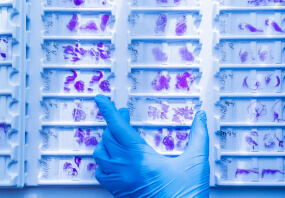Peer Reviewed Papers:
Chromotropic character of bacterial acidic polysaccharides: Part III--Interaction of cationic dye pinacyanol chloride with Klebsiella K15 capsular polysaccharide. A Mitra et al. Indian journal of biochemistry & biophysics, 27(5), 291-294 (1990-10-01)
Interaction of cationic dye pinacyanol chloride with the acidic capsular polysaccharide isolated from Klebsiella serotype K15 has been investigated by spectral measurements. Klebsiella K15 polysaccharide consists of hexasaccharide repeating units containing one residue each of glucuronic acid and glucose, and
Topo-optical reactions of the human blood platelet membrane. Makovitzky et al. Histochemistry, 79(2), 281-287 (1983-01-01)
The polarization optical analysis of human blood platelets was carried out by means of topo-optical staining reactions. Similar studies have not been performed so far. With this approach we were able to demonstrate the spatially oriented nature of glycoprotein components
Determination of the dimerization constant of pinacyanol: role of the thermochromic effect. Raimon Sabaté et al. Spectrochimica acta. Part A, Molecular and biomolecular spectroscopy, 70(2), 471-476 (2007-10-30)
Pinacyanol (PIN), as other cyanine dyes, has demonstrated a unique ability to form associates such as dimers, and H- and J-aggregates. This association is strongly favoured in water, and even at low dye concentrations, dimers and superior order aggregates are
Effect of water-miscible organic solvents on the catalytic activity of cytochrome c.R Vazquez-Duhalt et al. Enzyme and microbial technology, 15(11), 936-943 (1993-11-01)
The effect of five water-miscible organic solvents (tetrahydrofuran, N,N-dimethylformamide, acetonitrile, 2-propanol, and methanol) on the oxidation of pinacyanol chloride (Quinaldine Blue) by horse heart cytochrome c was determined. Hydrogen peroxide was used as the oxidant, and a change in catalytic
Induced circular dichroism of the interaction between pinacyanol and algal alginates. Sa'ib J Khouri et al. Carbohydrate research, 344(13), 1729-1733 (2009-08-12)
The interaction between pinacyanol chloride and sodium alginate or guluronate-rich alginate is found to effect profound changes in the visible absorbance and circular dichroism spectra. Two different types of aggregates are observed depending on the relative dye/alginate concentrations.
- UPC:
- 51172834
- Condition:
- New
- Availability:
- 3-5 Days
- Weight:
- 1.00 Ounces
- HazmatClass:
- Yes
- MPN:
- 166510-1G
- CAS:
- 605-91-4












